Franziska Dorothea Lebrun- Thomas Gainsborough (1780)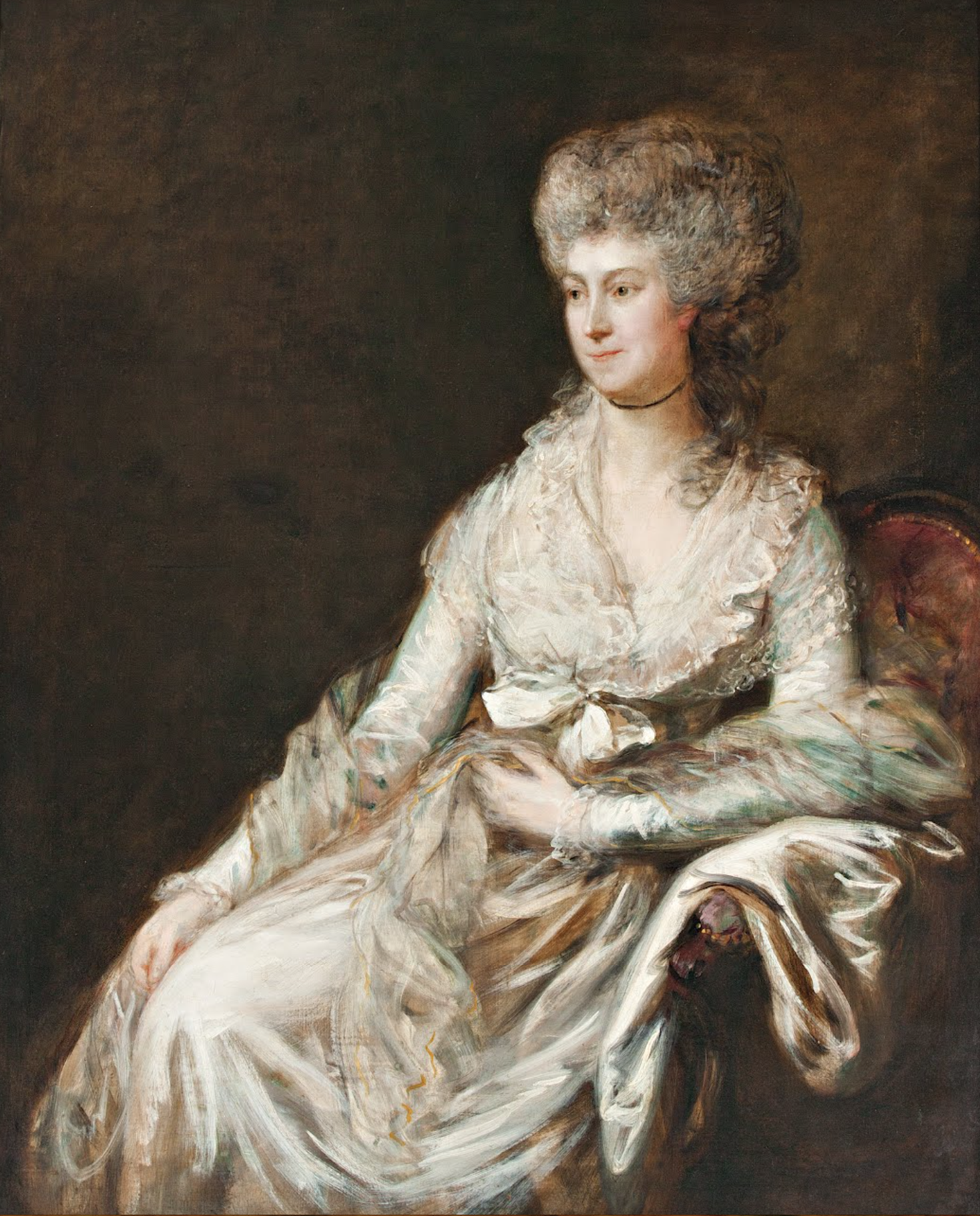
Francesca Lebrun, the primary female representative of the Mannheim School, was born Franziska Dorothea Danzi, daughter of cellist Innocenz Danzi and elder sister of composer Franz Danzi. She probably received musical training from her father and launched on a singing career at age 17, appearing in Sacchini's one-act scena La contadina in corte. Dr. Charles Burney noted her debut, writing "(her) voice and execution are brilliant...she is now a very engaging, agreeable performer, and promises still greater things in (the) future." Her success led to an engagement with the Mannheim court opera that lasted until 1777, when Danzi journeyed to London to appear in operas by Sacchini and Johann Christian Bach held at the King's Theater. During her absence, the courts of Munich and Mannheim merged upon the death of the Carl Theodor, Elector of Bavaria. Upon her return, Danzi married oboist and composer Ludwig August Lebrun, lately displaced as a member of the Mannheim orchestra. Under the name Francesca Lebrun, she embarked on a tour of Europe with her husband. When the Teatro alla Scala opened in Milan on August 3, 1778, with Antonio Salieri's opera Europa Riconoscuita, Lebrun was the prima diva in the cast. Lebrun created a sensation in Paris the following year at the Concert Spirituel through her ability to fit Italian words to instrumental parts of symphonies concertantes and sing them. The Lebruns lived in London from 1779 through 1781, as Francesca fulfilled a two-year-long stint at the King's Theater. In 1780, Francesca Lebrun's portrait was painted by Thomas Gainsborough, and that year she published two opus numbers' worth of Sonatas for fortepiano with violin accompaniment, totaling 12 sonatas in all. These are the only known works of Francesca Lebrun, nonetheless they are solidly crafted in the Mannheim style and adventurous enough to hold up remarkably well even today. Lebrun must've had a formidable piano technique, judging from the level of difficulty of her keyboard parts. The sonatas were an instant hit and were frequently re-published throughout Europe. During her lifetime, Lebrun performed, in addition to the localities named above, in Prague, Vienna, Naples, and elsewhere. In Vienna on March 13, 1785, Lebrun performed at a musicale organized by Wolfgang Amadeus Mozart, with whom she shares exact birth and death years, although there is no evidence the two ever met. Lebrun's husband died suddenly as the pair were to play a series of concerts in Berlin during Carnival season. Ludwig August Lebrun's death proved a blow too great for Francesca Lebrun to withstand, and she died in Berlin just six months later at the age of 35. Francesca and Ludwig August Lebrun had two children, both daughters, who received musical instruction from their uncle, Franz Danzi. Rosine Lebrun (1783-1855) became a singing actress and a mainstay of the Munich theater. Sophie Lebrun (1781-1863) was a famous concert pianist and composer of piano concertos and sonatas, but regrettably none of these works have survived.
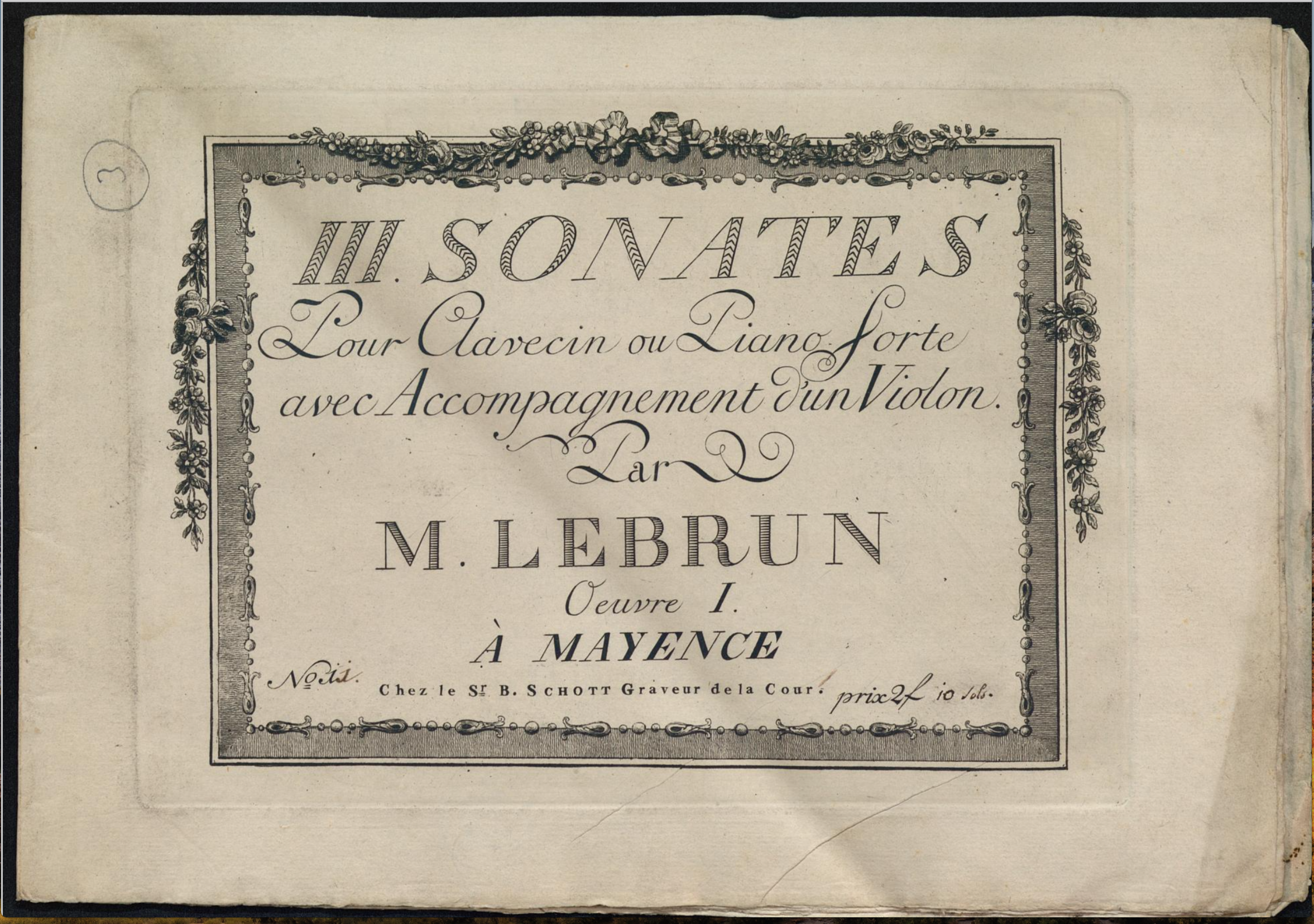
Dr. Burney's Musical Tours in Europe, Volume II. An Eighteenth-Century Musical Tour in Central Europe and the Netherlands
Charles Burney (1726-1814) took on the three roles of music historian, composer, and musician. His first music books, The Present State of Music in France and Italy… (London, 1771) and The Present State of Music in Germany, the Netherlands, and the United Provinces… (London, 1773), were the results of his extensive travels around Europe. His 1770 trip took him from London to Paris, Geneva, Turin, Milan, Padua, Venice, Bologna, Florence, Rome, and Naples. His second tour, through Germany and the Low Countries, resulted in his second book. All of this was in support of his General History of Music, which came out in 4 volumes (I: 1776, II: 1782, III and IV: 1789).
His daughter, the novelist Frances (Fanny) Burney, wrote a biography of her father after his death in 1814. The Memoirs of Doctor Burney, three in volumes, appeared in 1832 and is where much of the information about Burney’s social circles comes to life.
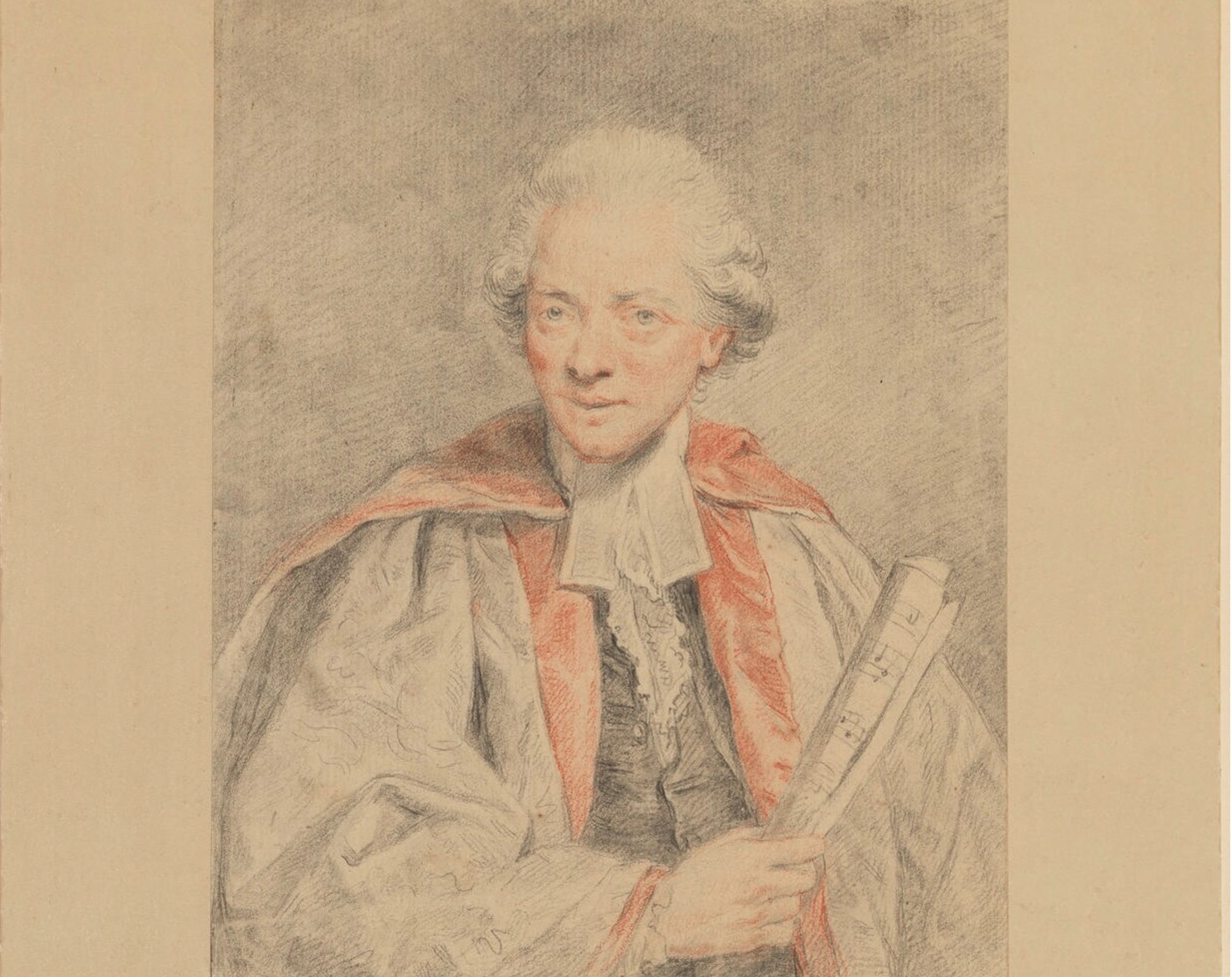
Danzi, Frantsisca (1756-1791). A high soprano of great fame later in the Italian and German centres and in London. Further, she composed sonatas for piano and violin. She married the celebrated Mannheim oboist, L. A. Lebrun.
Signora Francesca Danzi, 1 a German girl, whose voice and execution are brilliant: she has likewise a pretty figure, a good shake, and an expression as truly Italian as if she had lived her whole life in Italy; in short, she is now a very engaging and agreeable performer, and promises still greater things in future, being young, and having never appeared on any stage till this summer.
The Elector, Electress, and Princess Royal of Saxony, were present at this performance. The theatre, though small, is convenient; the decorations and dresses were ingenious and elegant, and there was a greater number of attendants and figurers than ever I saw in the great opera, either of Paris or London: in the dance, representing a German fair, there were upwards of a hundred persons on the stage at one time; but this opera is very inconsiderable, compared with that at Manheim, in the winter, which is performed in one of the largest and most splendid theatres of Europe, capable of containing five thousand persons; this opera begins the fourth of November, and continues generally, twice a week, till Shrove-Tuesday. I was informed that the mere illuminations of the Manheim theatre, with wax lights, cost the elector upwards of forty pounds, at each representation; and that the whole expence of bringing a new opera on this stage, amounts to near four thousand. The great theatre, the ensuing winter, was to be opened with an opera composed by Mr. J. Bach who was daily expected here from London, when I was at Manheim.
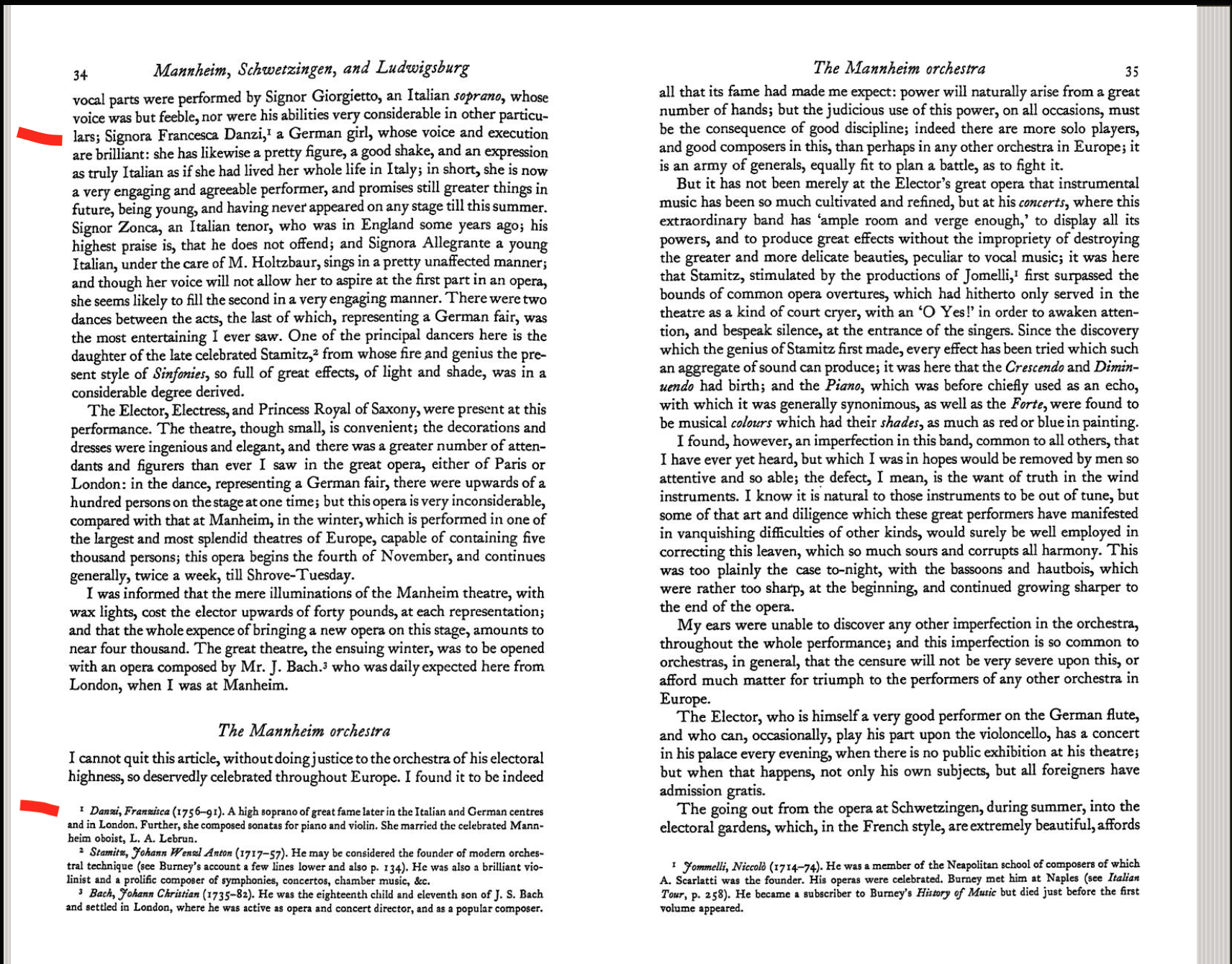
Charles Burney visited Mannheim that same summer 1772 on his tour through Germany. At nearby Schwetzingen he first heard a young soprano, Franziska Danzi (1756–91). Her father was the cellist Innocenz Danzi and her mother Barbara was a sister of the Mannheim composer Carl Joseph Toeschi; her younger brother Franz Danzi (1763–1826) became a renowned composer. Franziska had recently made her stage debut in Florian Leopold Gassmann’s L’amore artigiano in May 1772. Burney heard her perform in Antonio Sacchini’s La contadina in corte on 9 August 1772, and wrote that her “voice and execution are brilliant: she has likewise a pretty figure, a good shake, and an expression as truly Italian as if she had lived her whole life in Italy; in short, she is now a very engaging and agreeable performer, and promises still greater things in the future, being young, and having never appeared on any stage till this summer.”
Burney also mentions that Bach “was daily expected here from London” to complete his opera seria for the gala days in November. Bach’s Temistocle had its premiere at the court theater on 5 November; the cast included Dorothea Wendling (prima donna, Aspasia) and Francesco Roncaglia (primo uomo, Lisimaco), Elisabeth Wendling (seconda donna, Rossana), Giovanni Battista Zonca (bass, Serse), and Anton Raaf (tenor, the title role); Bach was invited to write a second opera for Mannheim, Lucio Silla (1775), with nearly the same cast. Franziska Danzi did not perform in either of these operas, but she probably met Bach at this time. She did perform in two comic operas during Bach’s visit in November 1772: as Olivetta in Niccolò Piccinni’s Le inte gemelle and as the coloratura part of Calloandra in Antonio Salieri’s La fiera di Venezia. Bach would likely have remembered this attractive soprano and her distinctive voice.
Danzi had her first major success in Anton Schweitzer’s Alceste, first performed at Schwetzingen in 1775. She took the role of Parthenia, a coloratura role originally written for Josepha Hellmuth in the Weimar premiere (1773). The success of this work at Carl Theodor’s court led to the commission of a new Singspiel by poet Anton Klein and composer Ignaz Holzbauer, Günther von Schwarzburg, in which Danzi sang the prima donna role of Anna. he celebrated opening of the Mannheim National Theater in January 1777 drew attention and praise from all over Europe, and brought Danzi international fame. The original cast included Anton Raaf as Günther, Ludwig Fischer as Rudolf, Barbara Strasser as Asberta, Queen of Bohemia, who takes revenge on Günther, and Franz Hartig as Karl. Danzi plus the latter three had also performed in Schweitzer’s Alceste; so this was a German opera for a German cast, even if Raaf had been trained and spent most of his career in Italy. Mozart heard the opera in November 1777, and specifically praised Holzbauer’s music; he also mentioned that Danzi was in England, and her replacement, Elisabeth Wendling, did not have a high enough tessitura for this demanding role.
Silhouettes of Ludwig August Lebrun and Franziska Danzi-Lebrun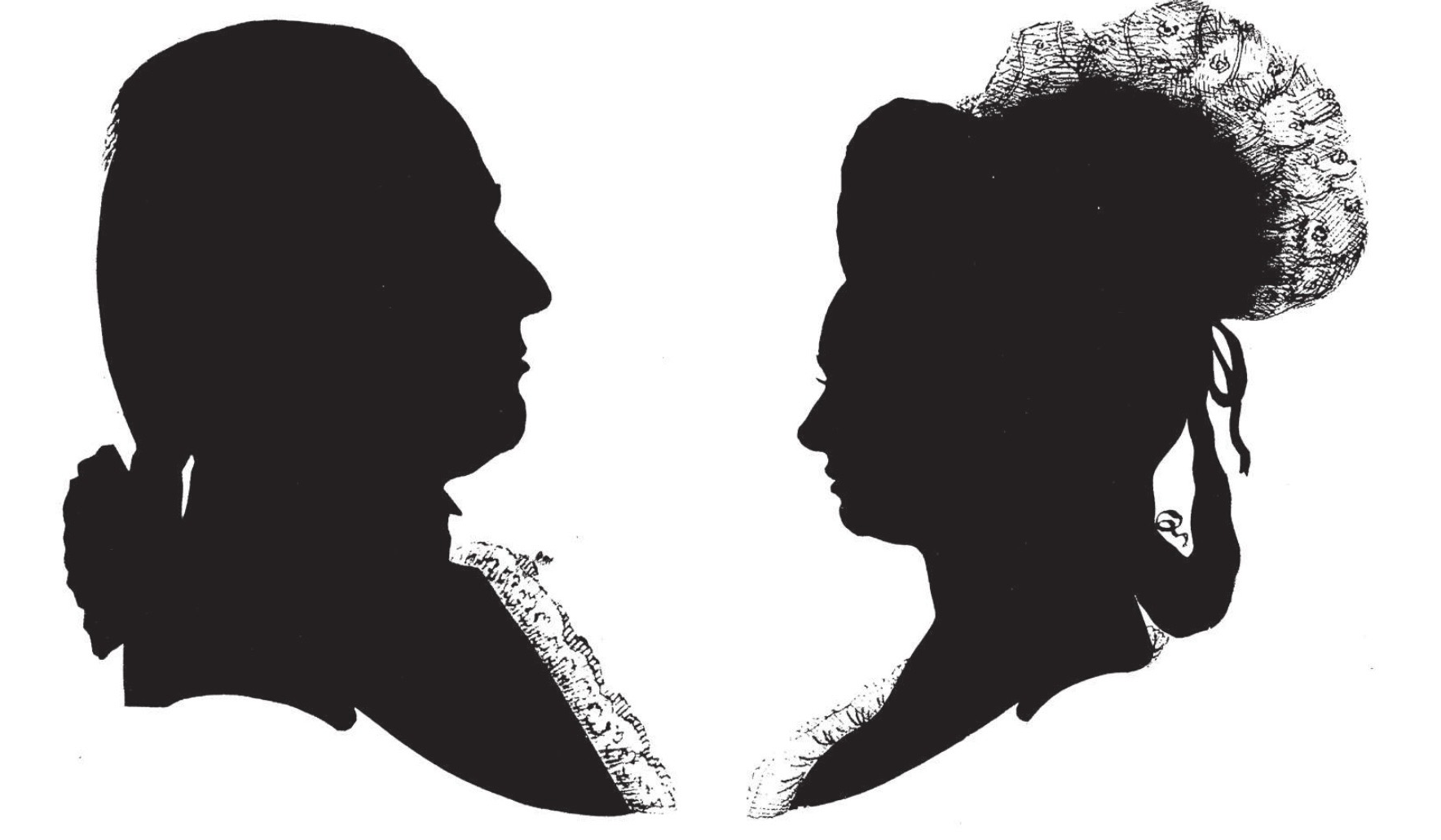
At the King’s heatre, London
By February 1777 it was known that the castrato Francesco Roncaglia and Franziska Danzi had been hired to sing at the King’s heatre in London for the 1777–78 season. We can assume that either J.C. Bach or Burney (or both) had recommended them. They made their debuts in Sacchini’s Creso and later the same season sang in Sacchini’s Erifile and Bach’s La clemenza di Scipione. Antoine Le Texier, a French critic who would later become Richard Sheridan’s opera manager at the King’s Theatre, wrote about the young soprano in some detail:
Mlle Danzi, hired for the prima donna seria roles, has the type of voice that is one of the most extraordinary to hear: an incomprehensibly wide range and above all great accuracy. She sings an aria di bravura in the second act of Creso, a most sublime composition, and which reunites difficulties that another author would not dare to write, imagining it would be impossible to execute. She also has an agreeable countenance, which is suited very well for the theater; she seems to be timid, a defect that could be corrected by the reassurance of the approbation that she will deserve.In the next issue, Le Texier compares her favorably to the soprano Lucrezia Aguiari, who had sung in London the preceding two seasons, 1775–77, and he also mentions that Danzi had been hired to sing in Milan the following season:
Nothing is more astonishing than the extensive range of Mlle Danzi’s voice, if one had enthusiasm for the sharp little cries of Signora Aguiari, when she passed the normal compass of her voice, then one will certainly admire the surprising extent of a natural and agreeable voice, through five octaves, a very extensive span, with an accurate pitch and the most incomprehensible clarity. We have heard that Mlle Danzi is engaged to be the prima donna at the Opera [La Scala] in Milan next year; despite our regrets in losing her, we will be happy to see her move to the country where she can’t help but obtain perfection in singing that one can acquire only in charming Italy, the motherland of all that is musical; this will be the perfect school for Mlle Danzi to improve her singing and acting; she is nineteen [recte twenty-one], her appearance is very agreeable, and truly theatrical, and her acting in which we have discovered great potential, must make one believe also that, with work, she can become an excellent actress.
Burney describes her voice after hearing her sing in London:
As Signora Danzi, now Madame Le Brun, had a voice well in tune, a good shake, great execution, a prodigious compass, and great knowledge of Music, with youth, and a face and figure far from disagreeable; it seems difficult to account for the little pleasure her performance afforded to persons accustomed to good Italian singing. However, the problem certainly admits of a solution, if it be considered, that the natural tone of her voice is not interesting; that she had never been in Italy, and had been constantly imitating the tone and difficulties of instruments; that her chief labour and ambition had been to surprise, concluding perhaps that wonder however excited includes pleasure; and forgetting that though an ounce of salt may make a soup or ragoût sufficiently savoury, yet that two ounces will spoil it; in short, forgetting that she is not a bird in a bush or a cage, and that from a human figure, representing a princess or great personage, it is natural for an audience to expect human passions to be expressed in such tones, and with such art and energy, as will not degrade an individual of our own species, into a being of an inferior order.
This sounds much like his daughter’s description of Danzi-Lebrun’s performance in the pasticcio Alessandro nell’Indie:
Madame Le Brun’s songs, except two, I cannot I confess recollect anything of, but I believe their Style was unmarked — for she cannot sing a Cantabile, which prevents there being much variety in her Airs — but one of the 2 I remember was a chicherichi song in the 2d Act — A Bravura composed purposely for her wch goes up to the high, & a very unpleasing one I think. — Her Husband, who looks a conceited fop, gave the time &c when she sung, & the composition for ought I know might be his — I should suspect her Rondeau in the last Act at least to be his as it is very French.
Sacchini’s Eriile, regina di Zacinto, to a libretto by Giovanni de Gamerra (the poet who wrote Lucio Silla, set by Mozart in Milan, 1772, and later set by J.C. Bach in a modified version by Mattia Verazi in Mannheim, 1775), had its premiere on 7 February 1778 with Danzi in the title role. he most remarkable aria in the opera is Danzi’s aria in act 2, “Lieta quest’alma amante,” with oboe obbligato. She also appeared in Sacchini’s L’amore soldato (5 May 1778) and Tommaso Giordani’s Il re pastore (30 May 1778).
Bach had not written a new opera for the London stage since Carattaco (1767); according to Burney, he had been unwilling to write any operas for London until Anna De Amicis came on the scene in 1762–63. Thus he wrote operas only when the prima donna met his standards, and Danzi must have done so. In the 1770s the taste of the opera-going public had shifted towards lighter forms, and Clemenza di Scipione, in what turned out to be Bach’s final opera for London, reflected some of these trends. Described as a “new Serious Opera . . . with Grand Chorusses,” Clemenza di Scipione had its premiere on 4 April 1778 at the King’s Theatre. According to the Public Advertiser, “the Poetry is said to be the Production of a Foreign Minister residing at our Court; a Person of Taste and Learning, who softens the Cares of Negociation, by sacrificing in secret to the Muses.” The cast included the tenor Valentin Adamberger (later Belmonte in Mozart’s Die Entführung aus dem Serail) as Scipione; Francesco Roncaglia (primo uomo in Bach’s two operas for Mannheim) as Luceio; and Franziska Danzi (prima donna) as Arsinda. These three singers appeared in other operas together, and Mlle Baccelli was one of the principal dancers. From the tone of the enthusiastic accounts of the opera in the Public Advertiser, we can assume that it was a great success. Several arias are mentioned by name and proclaimed to be especially fitting for the singers:
That beautiful Air in the second Act, “Frena le belle lacrime,” sung by Signor Roncaglia, is charmingly pathetic, and well suited to his Voice; as is likewise the one in Act III, “Nel partire, idolo mio;” and that of Signora Danzi in Act I, “Dal dolor cotanto oppresso.” he most capital Air, however, is that of Signora Danzi in the Second Act [“Infelice in van m’afano”], accompanied by the Violin, Violoncello, German Flute, and Hautboy. his is truly a Chef d’œuvre in every Respect, and Signor Bach is extremely fortunate in the amazing Execution of Signora Danzi, and the masterly Accompanyment of Messrs. Cramer [violin], Cervetto [cello], Florio [lute], and Le Brun [oboe]
“Infelice! In van m’afano” is of special importance not only because it is the longest and most elaborate of the arias, but it also bears a resemblance to a sinfonia concertante by virtue of Bach’s employment of four obbligato instruments. In the aria, Bach even gives the voice passages of sequential imitative music in combination with the obbligato instruments, thus creating a unique interplay of voice and instruments. The similarities between this concertante aria and Constanza’s “Martern aller Arten” in Mozart’s Die Entführung aus dem Serail (1782) are striking; Adamberger could have brought the aria to Mozart’s attention in Vienna. Danzi’s voice was clearly in the same league as that of Caterina Cavalieri’s, who was the star soprano at the Viennese National heater. And Bach’s aria, like Mozart’s, is a showcase for soprano (Danzi) as well as the four obbligato instruments.
It is not clear whether Lebrun intended to marry Danzi before leaving Mannheim, or whether the two courted in London (silhouettes of the Lebruns c. 1780).
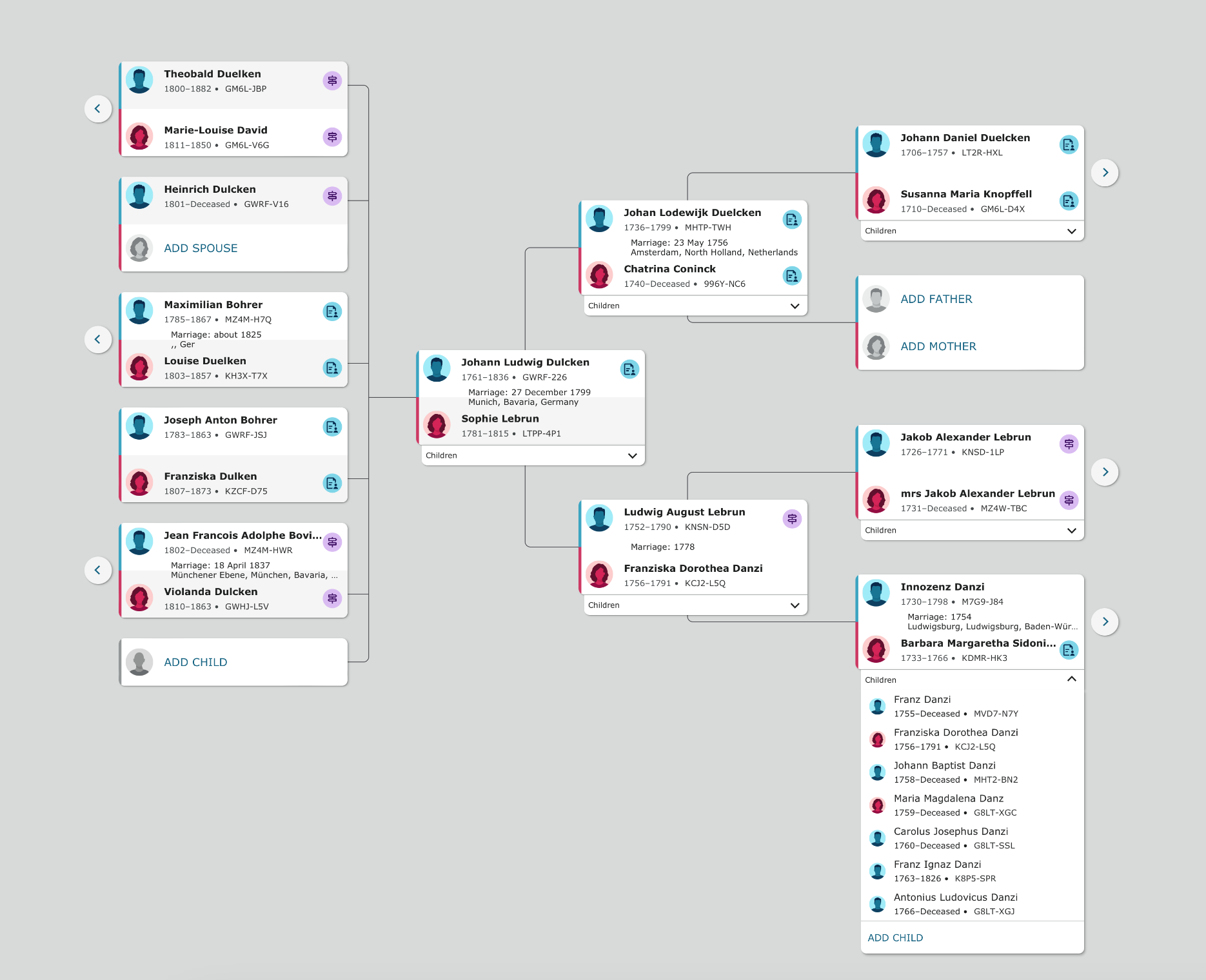
 Foundation Musick's Monument
Foundation Musick's Monument